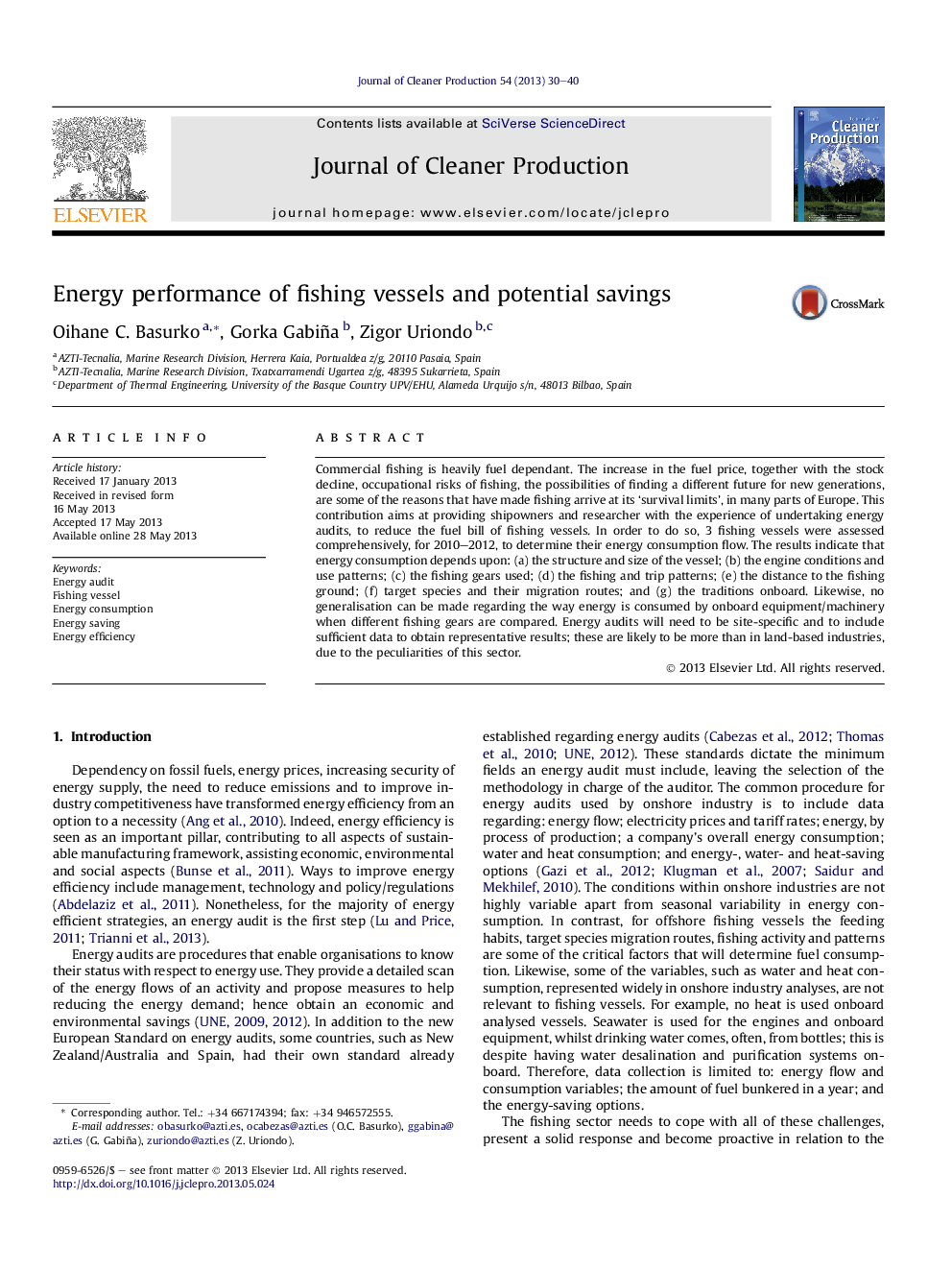| کد مقاله | کد نشریه | سال انتشار | مقاله انگلیسی | نسخه تمام متن |
|---|---|---|---|---|
| 1745280 | 1522192 | 2013 | 11 صفحه PDF | دانلود رایگان |

• Energy consumption of three fishing vessels was monitored during two years.
• Energy audits are essential to assess the validity of energy-saving measures.
• Energy flow depends upon vessel, fishing gear and distance to fishing ground.
• Energy-saving measures should be vessel-specific.
• Steaming speed is the best energy-saving measure for troller and pole and liner.
Commercial fishing is heavily fuel dependant. The increase in the fuel price, together with the stock decline, occupational risks of fishing, the possibilities of finding a different future for new generations, are some of the reasons that have made fishing arrive at its ‘survival limits’, in many parts of Europe. This contribution aims at providing shipowners and researcher with the experience of undertaking energy audits, to reduce the fuel bill of fishing vessels. In order to do so, 3 fishing vessels were assessed comprehensively, for 2010–2012, to determine their energy consumption flow. The results indicate that energy consumption depends upon: (a) the structure and size of the vessel; (b) the engine conditions and use patterns; (c) the fishing gears used; (d) the fishing and trip patterns; (e) the distance to the fishing ground; (f) target species and their migration routes; and (g) the traditions onboard. Likewise, no generalisation can be made regarding the way energy is consumed by onboard equipment/machinery when different fishing gears are compared. Energy audits will need to be site-specific and to include sufficient data to obtain representative results; these are likely to be more than in land-based industries, due to the peculiarities of this sector.
Figure optionsDownload as PowerPoint slide
Journal: Journal of Cleaner Production - Volume 54, 1 September 2013, Pages 30–40